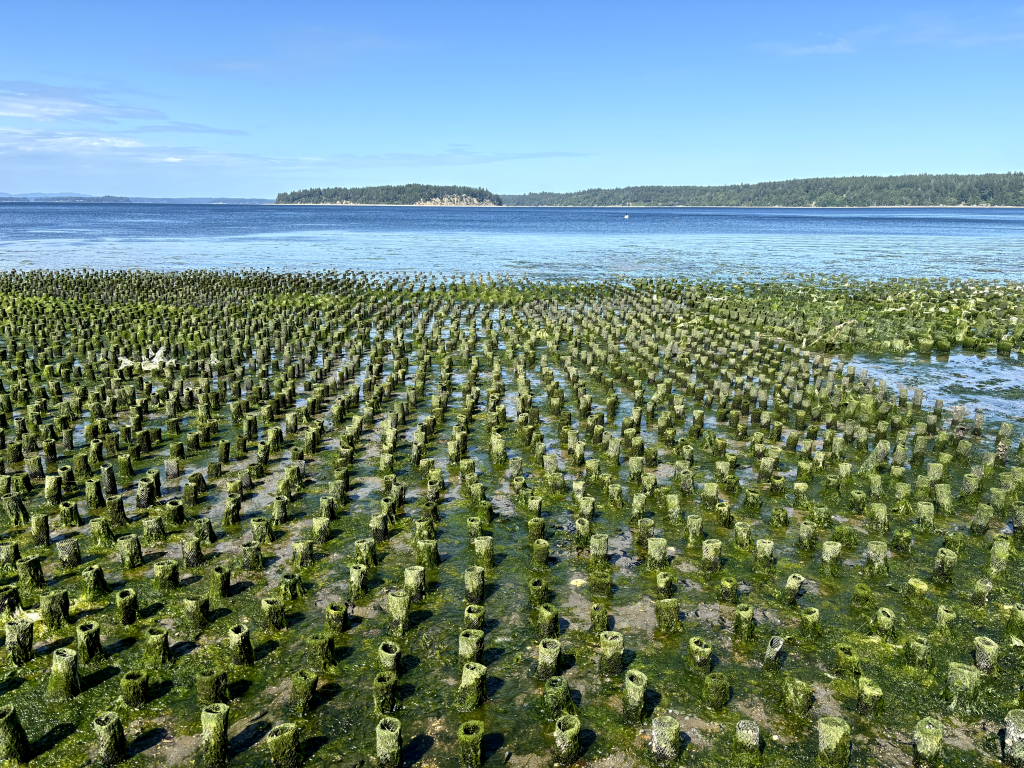
Geoduck are grown using bottom culture methods that consist of planting seed clams in sandy areas of the intertidal zone where the bottom is exposed during low tides, or sub-tidally. Plastic or mesh tubes are inserted into the sandy bottom and a few seed clams are put into each tube. In some areas, a large cover net is also added. The tubes and net protect the clams from predators. After one to two years, the tubes are removed. Once they reach market size, about five to seven years from planting, they are harvested using a low-pressure water hose. The hose moves the sand away from the clams so they can be more easily pulled from their burrows.
Manila clams and oysters can be grown in bags that are either tethered or untethered to the bottom. Seed clams and oysters are put in the mesh bags where they grow to market size. The bags are cleaned and turned over periodically to ensure water continues to flow through them. The water flow provides oxygen to the clams and oysters as well as the microscopic food they need to grow.
Image captions and credits
Geoducks “planted” at intertidal shellfish farm in Washington; Washington Sea Grant